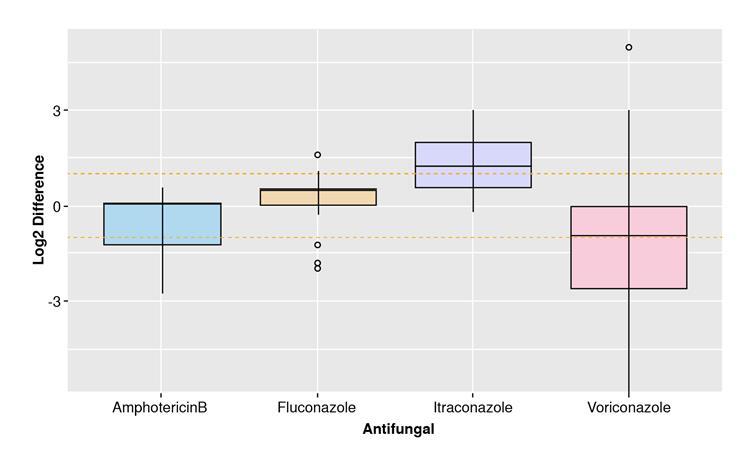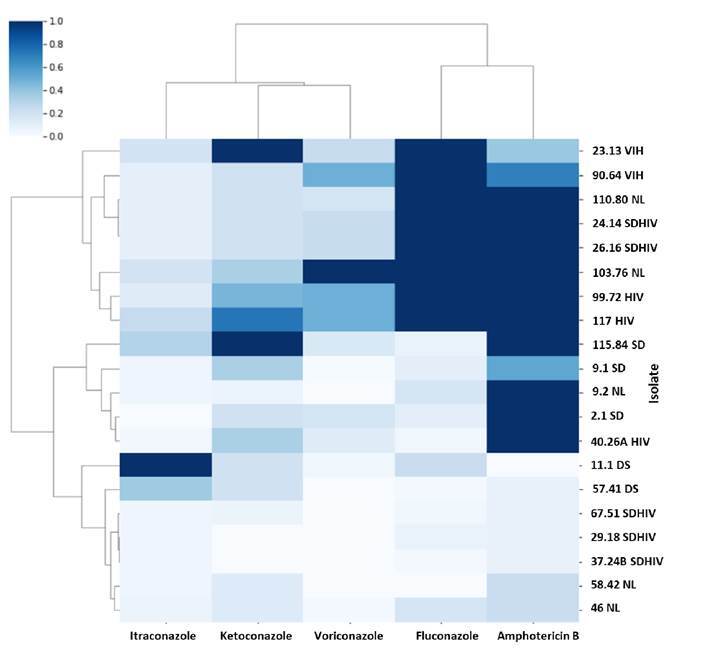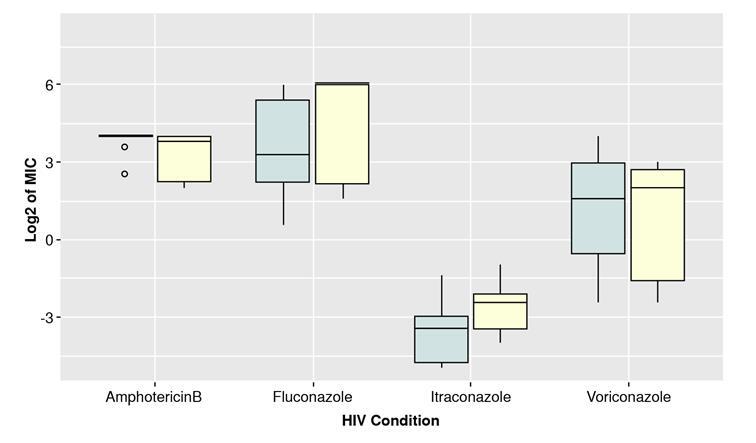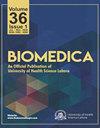In vitro sensitivity of Malassezia furfur isolates from HIV-positive and negative patients to antifungal agents
IF 0.6
4区 医学
Q4 TROPICAL MEDICINE
引用次数: 0
Abstract
Abstract Introduction. Malassezia is a lipophilic and lipid-dependent yeast genus belonging to the skin microbiota of humans and other animals. However, due to dysbiosis processes or other factors in the host, this yeast can cause different pathologies, ranging from skin diseases, such as seborrheic dermatitis, to fungemia. Isolation of Malassezia furfur has been reported in HIV-positive patients with or without skin lesions. Due to its opportunistic nature and its variable resistance to antifungal compounds, it is relevant to know the Malassezia sensitivity profiles. Objective. To determine the sensitivity to different antifungal agents, of clinical isolates of M. furfur obtained from HIV-positive or negative patients, with or without seborrheic dermatitis. Materials and methods. Assessment of isolates sensitivity to itraconazole, voriconazole, fluconazole, and amphotericin B was performed by two techniques: (1) Broth microdilution using Clinical and Laboratory Standards Institute (CLSI) protocol M27-A3 with modifications; and (2) agar tests using Etest®. Results. Isolates obtained from HIV patients showed an increase in the minimum inhibitory concentration of fluconazole, voriconazole, and amphotericin B, compared with those of non-HIV patients. Itraconazole was the antifungal with the lowest minimum inhibitory concentration (MIC) in most isolates. Conclusion. We observed differences in the sensitivity profiles of M. furfur isolates according to the context of the patient. High MIC of antifungals like fluconazole, commonly used for treating pathologies caused by Malassezia, were identified.



HIV阳性和阴性患者毛皮马拉色菌分离株对抗真菌药物的体外敏感性
简介:马拉色菌是一个亲脂性和脂质依赖性酵母属,属于人类和其他动物的皮肤微生物群。然而,由于宿主中的微生态失调过程或其他因素,这种酵母会引起不同的病理,从皮肤病,如脂溢性皮炎,到真菌血症。据报道,在有或无皮肤病变的HIV阳性患者中分离出糠皮马拉色菌。由于其机会性和对抗真菌化合物的可变耐药性,了解马拉色菌的敏感性谱是相关的。目的:测定从HIV阳性或阴性患者,伴有或不伴有脂溢性皮炎的毛皮分枝杆菌临床分离株对不同抗真菌药物的敏感性。材料和方法:通过两种技术评估分离株对伊曲康唑、伏立康唑、氟康唑和两性霉素B的敏感性:(1)使用改良的临床和实验室标准研究所(CLSI)方案M27-A3进行肉汤微量稀释;和(2)使用Etest®的琼脂测试。结果:与非HIV患者相比,从HIV患者获得的分离物显示氟康唑、伏立康唑和两性霉素B的最低抑制浓度增加。伊曲康唑是大多数分离株中最低抑菌浓度(MIC)的抗真菌药物。结论:根据患者的情况,我们观察到毛皮分枝杆菌分离株的敏感性谱存在差异。氟康唑等抗真菌药物的MIC较高,常用于治疗马拉色菌引起的病理。
本文章由计算机程序翻译,如有差异,请以英文原文为准。
求助全文
约1分钟内获得全文
求助全文
来源期刊

Biomedica
医学-热带医学
CiteScore
1.60
自引率
0.00%
发文量
76
审稿时长
>12 weeks
期刊介绍:
Biomédica is the quarterly journal of the Instituto Nacional de Salud of Colombia [Colombias National Health Institute]. Its purpose is to publish the results of original research that contributes meaningfully to knowledge in health and biomedical sciences.
 求助内容:
求助内容: 应助结果提醒方式:
应助结果提醒方式:


